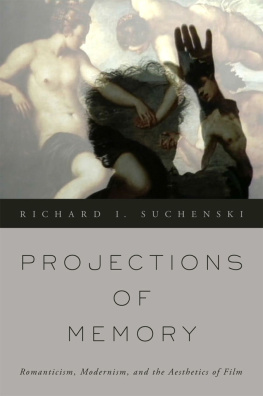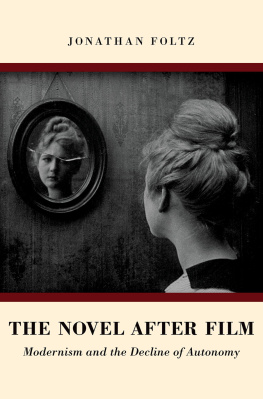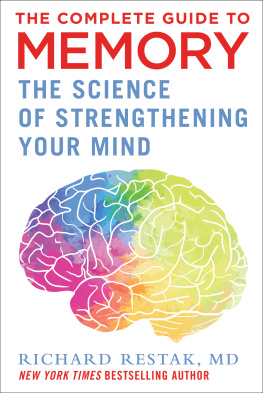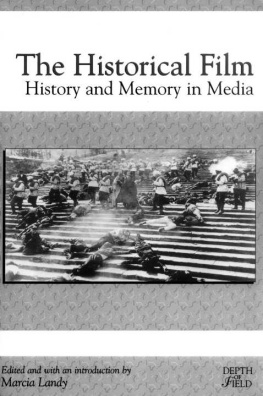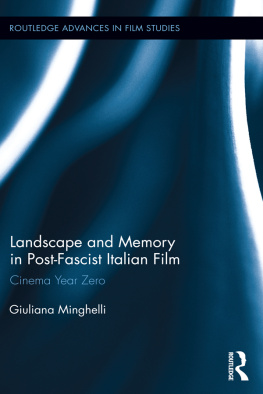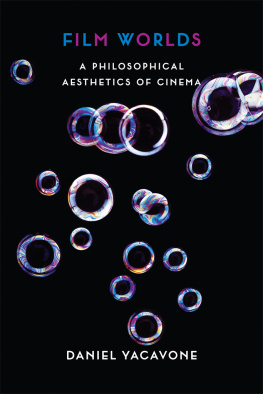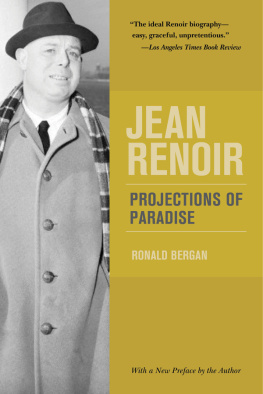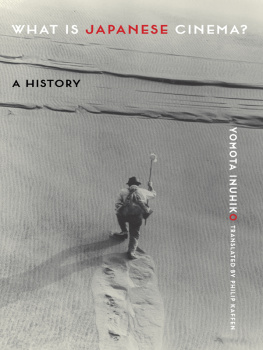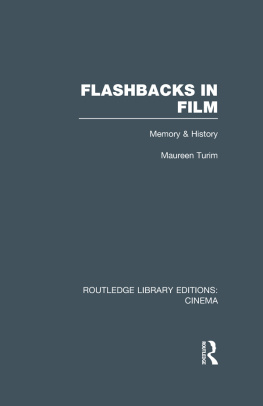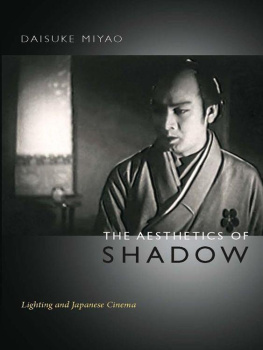Projections of Memory
Projections of Memory
ROMANTICISM, MODERNISM, AND THE AESTHETICS OF FILM
Richard I. Suchenski


Oxford University Press is a department of the University of Oxford. It furthers the Universitys objective of excellence in research, scholarship, and education by publishing worldwide. Oxford is a registered trade mark of Oxford University Press in the UK and certain other countries.
Published in the United States of America by Oxford University Press
198 Madison Avenue, New York, NY 10016, United States of America.
Oxford University Press 2016
All rights reserved. No part of this publication may be reproduced, stored in a retrieval system, or transmitted, in any form or by any means, without the prior permission in writing of Oxford University Press, or as expressly permitted by law, by license, or under terms agreed with the appropriate reproduction rights organization. Inquiries concerning reproduction outside the scope of the above should be sent to the Rights Department, Oxford University Press, at the address above.
You must not circulate this work in any other form and you must impose this same condition on any acquirer.
Cover still from Scnario du film Passion, a film by Jean-Luc Godard 1982 Gaumont.
CIP data is on file at the Library of Congress
ISBN 9780190274108 (hbk.); 9780190274115 (pbk.); eISBN 9780190614089
{ CONTENTS }
In writing this book, I have benefited greatly from conversations with many people. My debt to Dudley Andrew, John MacKay, Alexander Nemerov, P. Adams Sitney, and Jeffrey Stout is deep and, I hope, reflected inside. I am fortunate to have an editor as supportive and responsive as Brendan ONeill, and I am very grateful for the efforts of Stephen Bradley, Leslie Johnson, Nancy Rebecca, Suvesh Subramanian, Richard Isomaki, and Oxfords production team. The insightful comments of the outside reviewers helped me strengthen key arguments. Jim and Mary Ottaway deserve special thanks for their enthusiasm, counsel, and invaluable editorial assistance. For their thoughtful feedback on earlier versions of this project, I would also like to thank Ashish Avikunthak, Tim Barringer, David Bromwich, Scott Bukatman, Francesco Casetti, Katerina Clark, the late Richard Maxwell, Charlie Musser, Rob Nelson, Brigitte Peucker, Tony Pipolo, James Quandt, Noa Steimatsky, and Katie Trumpener.
A range of international institutions have provided generous research and material support. My first thanks must go to the Mrs. Giles Whiting Foundation, the Stavros S. Niarchos Foundation, and Yale Universitys Department of the History of Art, which provided fellowships at critical junctures. For making archival materials available and facilitating my research, many thanks are due to Robert Beavers; Kevin Brownlow; Charles Silver and the staff of the Celeste Bartos Film Study Center of the Museum of Modern Art; John Mhiripiri, Jonas Mekas, and Robert Haller of Anthology Film Archives; Georg Wasner, Markus Wessolowski, and the staff of the sterreichisches Filmmuseum; ric Le Roy, Caroline Patte, Fereidoun Mahboubi, and the staff of the Archives franaises du film, Centre national du cinma et de limage anime (CNC); Monique Faulhaber, Samantha Leroy, and milie Cauquy of the Cinmathque franaise; Sue Jones and the staff of the British Film Institute; Elena Rossi-Snook and the staff of the New York Public Library; and all of the museums that provided high-resolution stills. I am also grateful to the Association for Studies in French Cinema for the award of a research bursary enabling me to cover part of the costs of image reproduction.
During the countless hours of work needed to see this through to completion, I have been encouraged and inspired by my wife Christina (my belle noiseuse). Our daughter Pia was born in the later stages of writing, and she has kept me laughing since then. I dedicate this book to them.
Projections of Memory
A work of art is an attempt to express something that is unique, it is an affirmation of something that is whole, complete, absolute. But it is likewise an integral part of a system of highly complex relationships. A work of art results from an altogether independent activity; it is the translation of a free and exalted dream. But flowing within it the energies of many civilizations may be plainly discerned.
HENRI FOCILLON, THE LIFE OF FORMS IN ART (1934)
And all my creating and striving amounts to this, that I create and piece together into one, what is now fragment and riddle and grisly accident.
FRIEDRICH NIETZSCHE, THUS SPOKE ZARATHUSTRA (1885)

Nostalghia (Andrei Tarkovsky, 1983).
).

FIGURE I.1 Ruins of the Monastery Eldena near Greifswald (Caspar David Friedrich, 18241825; photograph bpk, Berlin / Nationalgalerie, Berlin / Joerg P. Anders / Art Resource, NY).

FIGURE I.2 Ulrich von Huttens Grave (Caspar David Friedrich, 18231824, Staatliche Kunstsammlungen, Weimar, courtesy Klassik Stiftung Weimar).
With this ambivalent ending, Tarkovsky implicitly portrays cinema as a medium uniquely capable of containing the essences of all the other arts. It is therefore highly appropriate that the protagonist is shown resting inside the exposed nave of a cathedral, a central Romantic motif whose literary locus is Victor Hugos 1831 novel, Notre-Dame de Paris. In a long section entitled This Will Kill That, Hugos narrator describes the process by which the collective energies and symbolic forms incarnated by the cathedral in the Middle Ages were supplanted by the democratic power of the Gutenberg press:
The genius distributed amongst the masses was everywhere compressed under feudalism, as if under a testudo of bronze shields; architecture was its one outlet, it was released through that art and its Iliads took the form of cathedrals. The other arts all submitted to the allegiance and discipline of architecture. They were the workmen in the great work. And even poor poetry, properly so called, still stubbornly vegetating in manuscripts, was obliged, if it wanted to be something, to enter within the framework of the building in the form of a hymn or of prose; the self-same role, after
In the twentieth century, these functions were largely taken on by the cinema, which absorbed elements from the earlier arts and incorporated them into an even more universal means of communication. As a mode of expression predicated (like a press) on mass reproduction, the cinema has been seen as several degrees removed from the aura Walter Benjamin ascribed to singular art objects. Films like Nostalghia, however, attempt to retrieve some of the properties Hugo aligns with the cathedral, redefining the terms by which film art and film artists are to be understood. In its most extreme forms, this supremely Romantic impulse has driven certain filmmakers to create extraordinarily ambitious films that also use duration to resist the industrial structures cinema is normally dependent upon. These films actively participate in a modernist interrogation of the relationship between form and content, often taking their innovations to what seem to be their limits, simultaneously establishing and exhausting their own paradigms.

